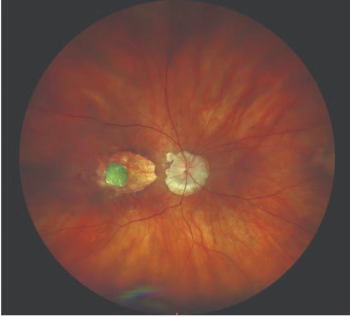
South Korea’s MFDS approved initiation of Phase 3 tinlarebant clinical trial for Stargardt Disease
This approval will allow Belite Bio to initiate the phase 3 clinical trial in South Korea, also known as the DRAGON study.
Belite Bio, Inc announced via a press release1 the approval of the company’s Clinical Trial Application to the Ministry of Food and Drug Safety (MFDS) in the Republic of Korea to initiate the Phase 3 clinical trial of Tinlarebant (aka LBS-008) for STGD1. This clinical trial will be known as the DRAGON study (NCT05244304).
In this phase 3 randomized, double-masked, placebo-controlled, global and multi-center study, researchers will evaluate the safety and efficacy of Tinlarebant in adolescent STGD1 patients. To date, Belite Bio has commenced the DRAGON study in the United States, the United Kingdom, Germany, France, Belgium, Switzerland, Netherlands, China, Hong Kong, Taiwan, and Australia. At least 90 patients are targeted for enrollment in this study with a 2:1 randomization (active:placebo).
About Tinlarebant (LBS-008)
Tinlarebant is a novel oral therapy which is intended to reduce the accumulation of toxins in the eye that cause STGD1 and contribute to GA, or advanced Dry AMD. These toxins are by-products of the visual cycle, which is dependent on the supply of vitamin A (retinol) to the eye. Tinlarebant works by reducing and maintaining levels of serum retinol binding protein 4 (RBP4), the sole carrier protein for retinol transport from the liver to the eye. By modulating the amount of retinol entering the eye, Tinlarebant reduces the formation of these toxins.
Stargardt Disease (STGD1)
STGD1 is the most common inherited retinal dystrophy (causing blurring or loss of central vision) in both adults and children. The disease is caused by mutations in a retina-specific gene (ABCA4) which results in massive accumulation of toxic vitamin A byproducts (known as “bisretinoids”) in the retina leading to retinal cell death and progressive loss of central vision. The fluorescent properties of bisretinoids and the development of retinal imaging systems have helped ophthalmologists identify and monitor disease progression. Currently, there are no FDA approved treatments for STGD1.
Importantly, STGD1 and GA, or advanced Dry AMD, share a similar pathophysiology which is characterized by the excessive accumulation of cytotoxic bisretinoids, retinal cell death, and loss of vision. Vision loss occurs slowly, despite peripheral expansion of “dead retina”, until the disease reaches the center of the eye (the macula). Therefore, Belite Bio intends to evaluate safety and efficacy of Tinlarebant in GA patients in its Phase 3 study (PHOENIX).
Reference:
1. Belite Bio Receives Approval to Initiate Tinlarebant (LBS-008) Phase 3 Clinical Trial for Stargardt Disease in South Korea. Press release. Belite Bio Inc., June 13, 2023. Accessed June 15, 2023. https://investors.belitebio.com/news-releases/news-release-details/belite-bio-receives-approval-initiate-tinlarebant-lbs-008-0
Newsletter
Keep your retina practice on the forefront—subscribe for expert analysis and emerging trends in retinal disease management.












































